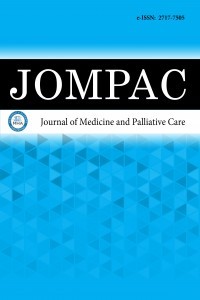1.
GBD 2016 Stroke Collaborators. Global, regional, and nationalburden of stroke, 1990-2016: a systematic analysis for the GlobalBurden of Disease Study 2016. Lancet Neurology. 2019;18(5):439-458.
2.
Asinger RW, Dyken ML, Fisher M. Cardiogenic brain embolism.The second report of the Cerebral Embolism Task Force. ArchNeurol. 1989;46(7):727-743.
3.
Bogousslavsky J, Cachin C, Regli F, Despland PA, Van MelleG, Kappenberger L. Cardiac sources of embolism and cerebralinfarction-clinical consequences and vascular concomitants: theLausanne Stroke Registry. Neurology. 1991;41(6):855-859.
4.
Sila CA. Cardioembolic stroke. In: Noseworthy JH, ed.Neurological therapeutics: principles and practice. New York:Martin Dunitz. 2003(1):450-457.
5.
Ferro JM. Cardioembolic stroke: an update. Lancet Neurol.2003;2(3):177-188.
6.
Fuster V, Ryden LE, Cannom DS, et al. ACC/AHA/ESC 2006guidelines for the management of patients with atrial fibrillation-executive summary: a report of the American College ofCardiology/American Heart Association Task Force on PracticeGuidelines and the European Society of Cardiology Committeefor Practice Guidelines (Writing Committee to Revise the2001 Guidelines for the Management of Patients With AtrialFibrillation). [Erratum appears in J Am CollCardiol 2007; 50:562]. J Am CollCardiol. 2006;48(4):854-906.
7.
Steinberg JS, O’Connell H, Li S, Ziegler PD. Thirty-Second GoldStandard Definition of Atrial Fibrillation and Its Relationshipwith Subsequent Arrhythmia Patterns: Analysis of a LargeProspective Device Database. Circ Arrhythm Electrophysiol.2018;11(7):e006274.
8.
Williams B, Mancia G, Spiering W, et al. ESC Scientific DocumentGroup. 2018 ESC/ESH Guidelines for the management of arterialhypertension. Eur Heart J. 2018;39(33):3021-3104.
9.
American Diabetes Association. Addendum. 2. Classificationand Diagnosis of Diabetes: Standards of Medical Care inDiabetes-2021. Diabetes Care. 2021;44(Suppl 1):15-33
10.
Wolf PA, Dawber TR, Thomas HE Jr.,Kannel WB. Epidemiologicassessment of chronic atrial fibrillation and risk of stroke: theFramingham study. Neurology. 1978;28(10):973-977.
11.
Hohnloser SH, Pajitnev D, Pogue J, et al. Incidence of strokein paroxysmal versus sustained atrial fibrillation in patientstaking oral anticoagulation or combined antiplatelet therapy: anACTIVE W substudy. J Am Coll Cardiol. 2007;50(22):2156-2161.
12.
Hart RG, Pearce LA, Rothbart RM, McAnulty JH, AsingerRW, Halperin JL. Stroke Prevention in Atrial FibrillationInvestigators. Stroke with intermittent atrial fibrillation:incidence and predictors during aspirin therapy. J Am CollCardiol. 2000;35(1):183-187.
13.
Link MS, Giugliano RP, Ruff CT, et al. ENGAGE AF-TIMI 48Investigators. Stroke and mortality risk in patients with variouspatterns of atrial fibrillation: results from the ENGAGE AF-TIMI 48 trial (Effective Anticoagulation With Factor Xa NextGeneration in Atrial Fibrillation-Thrombolysis in MyocardialInfarction 48). Circ Arrhythm Electrophysiol. 2017;10(1):e004267.
14.
Xu M , Liu F, Ge ZX, Li JM, Xie X, Yang JH. Functional studies ofleft atrium and BNP in patients with paroxysmal atrial fibrillationand the prediction of recurrence after CPVA. Eur Rev MedPharmacol Sci. 2020;24(9):4997-5007.
15.
Guazzi M, Dixon D, Labate V, et al. RV contractile functionand its coupling to pulmonarycirculation in heart failure withpreserved ejection fraction: stratification of clinical phenotypesand outcomes. JACC Cardiovasc Imaging. 2017;10(10):1211-1221.
16.
Mohammed SF, Hussain I, AbouEzzeddine OF, et al. Rightventricular function in heart failure with preserved ejection fraction:a communitybased study. Circulation. 2014;130(25):2310-2320.
17.
Melenovsky V, Hwang SJ, Lin G, Redfield MM, Borlaug BA.Right heart dysfunction in heart failure with preserved ejectionfraction. Eur Heart J. 2014;35(48):3452-3462.
18.
Hu CY, Wang CY, Li JY, Ma J, Li ZQ. Relationship betweenatrial fibrillation and heart failure. Eur Rev Med Pharmacol Sci.2016;20(21):4593-4600
19.
Benjamin EJ, D’Agostino RB, Belanger AJ, Wolf PA, Levy D. Leftatrial size and the risk of stroke and death. The FraminghamHeart Study. Circulation. 1995;92(4):835-841.
20.
Ogata T, Matsuo R, Kiyuna F, et al. Left atrial size and long-term risk of recurrent stroke after acute ischemic stroke inpatients with nonvalvular atrial fibrillation. J Am Heart Assoc.2017;6(8):e006402.
21.
Yaghi S, Moon YP, Mora-McLaughlin C, et al. Left atrialenlargement and stroke recurrence: the Northern ManhattanStroke Study. Stroke. 2015;46(6):1488-1493.
22.
Hasebe H, Yoshida K, lida M, et al. Right-to-left frequencygradient during atrialfibrillation initiated by right atrial ectopiesand its augmentation by adenosine triphosphate: implications ofright atrial fibrillation. Heart Rhythm. 2016;13(2):354-363.
23.
NademaneeK, McKenzie J, Kosar E, et al. A new approachfor catheter ablation of atrial fibrillation: mapping of theelectrophysiologicsubstrate. J Am CollCardiol. 2004;43(11):2044-2053.
24.
Rajdev A, Garan H, Biviano A. Arrhythmias in pulmonaryarterial hypertension. Prog Cardiovasc Dis. 2012;55(2):180-186.
25.
Goudis CA. Chronic obstructive pulmonary disease and atrialfibrillation: an unknown relationship. J Cardiol. 2017;69(5):699-705.
26.
Drakopoulou M, Nashat H, KempnyA, et al. Arrhythmias in adultpatients with congenital heart disease and pulmonary arterialhypertension. Heart. 2018;104(23):1963-1969.
27.
Iram R, Naud P, Xiong F, et al. Right atrial mechanisms ofatrialfibrillation in a rat model of right heart disease. J AmCollCardiol. 2019;74(10):1332-1347.

